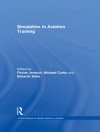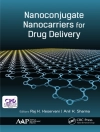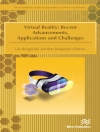- Reviews advances in understanding the role of different types of rumen microbiota such as archea, anaerobic fungi, viruses and the rumen wall microbial community
- Covers both the way the rumen processes fibre and protein and factors affecting outputs such as energy (affecting animal health), lipids (affecting meat and milk quality) and methane emissions (affecting environmental impact)
- Comprehensive review of the range of nutritional strategies to optimise rumen function such as the role of pasture, silage, cereal feed, plant secondary compounds and probiotics.
Содержание
1.Colonization and establishment of the rumen microbiota – opportunities to influence productivity and methane emissions: Diego P. Morgavi and Milka Popova, INRAE, France; David Yañez-Ruiz, CSIC, Spain; and Evelyne Forano, INRAE, France;
Part 1 Tools to understand the ruminal microbiome
2.A question of culture: bringing the gut microbiome to life in the -omics era: Páraic Ó Cuív, Microba Life Sciences and Mater Research Institute – The University of Queensland, Australia;
3.Rumen metabolomics – a powerful tool for discovery and understanding of rumen functionality and health: Tom F. O’Callaghan, Teagasc Moorepark Food Research, Ireland; and Eva Lewis, Devenish, UK;
4.A conceptual approach to the mathematical modelling of microbial functionality in the rumen: André Bannink, Soumya Kar, Dirkjan Schokker and Jan Dijkstra, Wageningen University and Research, The Netherlands;
Part 2 The rumen microbiota
5.Genome sequencing and the rumen microbiome: Jessica C. A. Friedersdorff and Benjamin J. Thomas, Institute of Biological, Environmental and Rural Science (IBERS), Aberystwyth University and Institute of Global Food Security (IGFS), Queen’s University Belfast, UK; Sara E. Pidcock, Institute of Global Food Security (IGFS), Queen’s University Belfast, UK; Elizabeth H. Hart, Institute of Biological, Environmental and Rural Science (IBERS), Aberystwyth University, UK; Francesco Rubino and Christopher J. Creevey, Institute of Global Food Security (IGFS), Queen’s University Belfast, UK;
6.The Rumen Archaea: Graeme T. Attwood and Sinead C. Leahy, Ag Research Ltd and New Zealand Greenhouse Gas Research Centre, New Zealand; and William J. Kelly, Donvis Ltd, New Zealand;
7.Ruminal-ciliated protozoa: Sharon A. Huws, Queen’s University Belfast, UK; Cate L. Williams, Aberystwyth University, UK; and Neil R. Mc Ewan, Robert Gordon University, UK;
8.The anaerobic rumen fungi: Matthias Hess, University of California-Davis, USA; Katerina Fliegerová, Czech Academy of Sciences, Institute of Animal Physiology and Genetics, Czech Republic; Shyam Paul, Indian Council of Agricultural Research, Directorate of Poultry Research, India; and Anil Kumar Puniya, Indian Council of Agricultural Research, National Dairy Research Institute, India;
9.Ruminal viruses and extrachromosomal genetic elements: Rosalind Ann Gilbert and Diane Ouwerkerk, Department of Agriculture and Fisheries, Queensland Government and Queensland Alliance for Agriculture and Food Innovation, The University of Queensland, Australia;
10.The rumen wall microbiota community: Mi Zhou, University of Alberta, Canada; Junhua Liu, Nanjing Agricultural University, China; and Le Luo Guan, University of Alberta, Canada;
Part 3 Nutrient processing in the rumen and host interactions
11.Ruminal fibre digestion: Adrian E. Naas and Phillip B. Pope, Norwegian University of Life Sciences, Norway;
12.Ruminal protein breakdown and ammonia assimilation: Jeffrey L. Firkins, The Ohio State University, USA; and Roderick I. Mackie, University of Illinois, USA;
13.Factors influencing the efficiency of rumen energy metabolism: Emilio M. Ungerfeld, Instituto de Investigaciones Agropecuarias (INIA), Chile; and Timothy J. Hackmann, University of California-Davis, USA;
14.Understanding rumen lipid metabolism to optimize dairy products for enhanced human health and to monitor animal health: Veerle Fievez, Nympha De Neve and Lore Dewanckele, Ghent University, Belgium;
15.Nutritional factors affecting greenhouse gas production from ruminants: implications for enteric and manure emissions: Stephanie A. Terry, Agriculture and Agri-Food Canada, Canada and University of Sydney, Australia; Carlos M. Romero, Agriculture and Agri-Food Canada and University of Lethbridge, Canada; and Alex V. Chaves and Tim A. Mc Allister, Agriculture and Agri-Food Canada, Canada;
16.Host-rumen microbiome interactions and influences on feed conversion efficiency (FCE), methane production and other productivity traits: Elie Jami, Agricultural Research Organization – Volcani Center, Israel; and Itzhak Mizrahi, Ben-Gurion University of the Negev, Israel;
17.The rumen as a modulator of immune function in cattle: S. Aditya, University of Veterinary Medicine Vienna, Austria and Brawijaya University, Indonesia; and E. Humer and Q. Zebeli, University of Veterinary Medicine Vienna, Austria;
Part 4 Nutritional strategies to optimise ruminal function
18.Role of the rumen microbiome in pasture-fed ruminant production systems: Sinéad M. Waters, David A. Kenny, Teagasc Animal and Bioscience Research Department, Ireland; and Paul E. Smith, Teagasc Animal and Bioscience Research Department and UCD College of Health and Agricultural Sciences, University College Dublin, Ireland;
19.Optimising ruminal function: the role of silage and concentrate in dairy cow nutrition to improve feed efficiency and reduce methane and nitrogen emissions: Aila Vanhatalo and Anni Halmemies-Beauchet-Filleau, University of Helsinki, Finland;
20.The use of feedlot/cereal grains in improving feed efficiency and reducing by-products such as methane in ruminants: Kristin Hales, US Meat Animal Research Center – USDA-ARS, USA; Jeferson Lourenco, Darren S. Seidel, Osman Yasir Koyun, Dylan Davis and Christina Welch, University of Georgia, USA; James E. Wells, US Meat Animal Research Center – USDA-ARS, USA; and Todd R. Callaway, University of Georgia, USA;
21.Plant secondary compounds: beneficial roles in sustainable ruminant nutrition and productivity: David R. Yáñez-Ruiz and Alejandro Belanche, Estación Experimental del Zaidín, CSIC, Spain;
22.The use of probiotics as supplements for ruminants: Frédérique Chaucheyras-Durand and Lysiane Dunière, Lallemand Animal Nutrition and Université Clermont Auvergne, INRAE, UMR 454 MEDIS, France;
Об авторе
Christopher Creevey is Professor of Computational Biology at the School of Biological Sciences and the Institute of Global Food Security (IGFS), Queen’s University, Belfast (QUB). He is an authority in systems-level analyses of biological function in both model and non-model organisms having worked previously in the European Molecular Biology Laboratory in Heidelberg and as a Science Foundation Ireland Stokes Lecturer in Teagasc and a Reader in Rumen Systems Biology at IBERS, Aberystwyth University.












